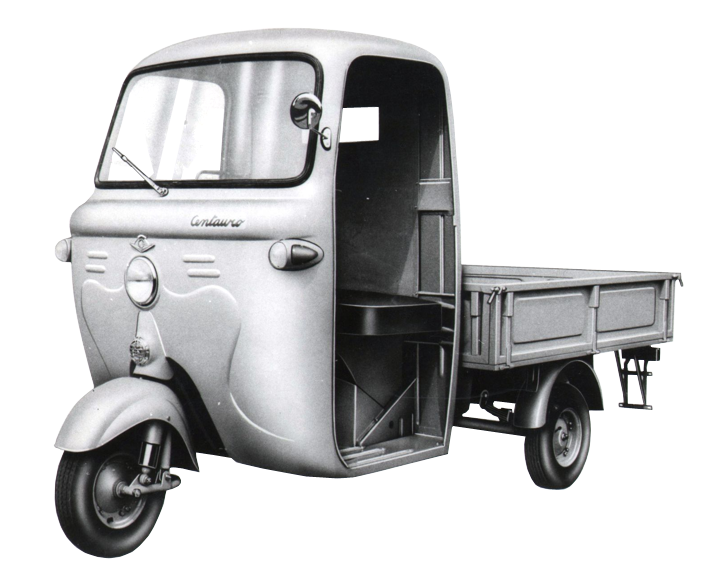
Though MV Agusta didn’t have a large presence in the commercial market, the didn’t ignore it. Their first transport vehicle debuted in 1947, and was an odd-looking device with a front-loading bed. In 1959 the company unveiled a more orthodox designm the “Centauro”. With a 150CC single-cilinder 4-stroke engine, it used a 4-speed gearbox with a seperate reverser. The 7 HP engine was located beneath the operators seat, and was accesed by lifting the seat cushion. A beefy frame was a combination of turbular and pressed steel, and while it had a dry weight of 270Kg its loaded weight capicity was 350Kg. Not exactly a road rocket, it had a top speed of 60 Km/h. Being a utility vehicle, the wheels were 3,75×8” steel discs.
Engine: Technical Specification (1959)
Cylinders / Cycle: single / 4 stroke
Displacement: 150,1 cc
Bore x stroke: 59,5 x 54 mm
Compression ratio: 7:1
Power / rpm: 7 HP / 5,500
Torque / rpm: NA
Cooling: forced air with fan
Distribution: push rod
Carburettor: 18 mm carburettor
Ignition: flywheel-magneto
Lubrication: wet sump
Starting: kickstart
Primary drive: gear
Clutch: wet multiple plate clutch
Gearbox: 4 speeds + reverse
Final drive: shaft with differential
Chassis:
Frame: tubular and pressed steel frame
Front suspension: trailing links & telehydraulic shocks
Rear suspension: leaf spring
Front brake: 178 mm mechanical drum
Rear brake: 180 mm hydraulic drums
Front tire: 4.00 x 8”
Rear tire: 4.00 x 8”
Wheels: disc
Tank: 12 litres
Length: 2790 mm
Width: 1440 mm
Wheelbase: 1884 mm
Weight: 270 Kg
Load capacity: 380 Kg
Performance: 60 kph

